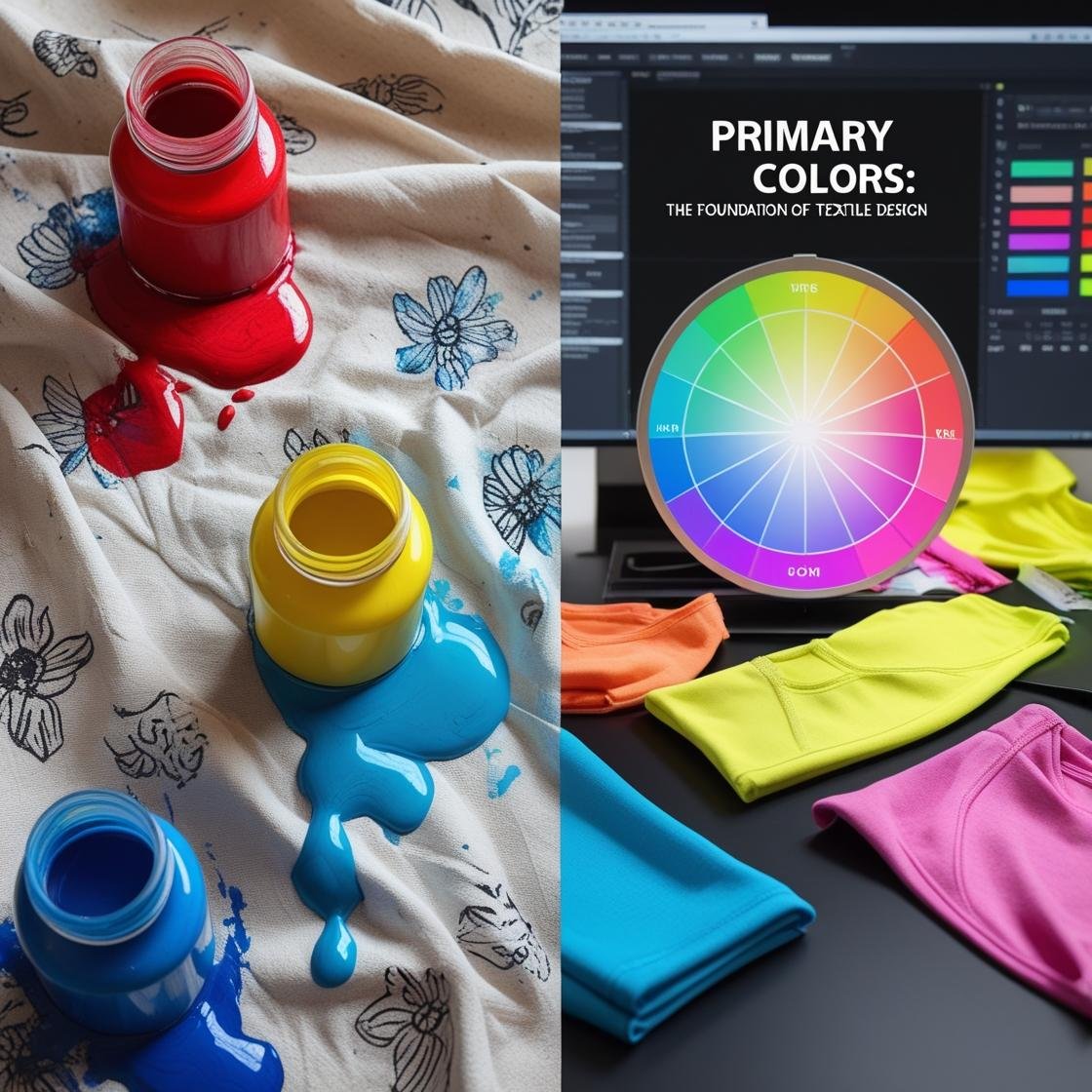
Color Theory for Textiles: Mastering Primary, Secondary & Tertiary Colors (A Designer’s Guide)
Introduction
– Hook: “Did you know 85% of shoppers base clothing purchases on color alone? As a textile designer, your color choices can make or break a collection.”
– Explain why color theory is critical for textiles: emotional impact, brand alignment, and technical precision (e.g., dye compatibility, digital printing).
– Preview: Break down primary, secondary, and tertiary colors with textile-specific examples and actionable tips.
1. Primary Colors: The Foundation of Textile Design
What Are Primary Colors?
– Definition: Colors that cannot be created by mixing others.
– Two Key Models:
1. Traditional (RYB): Red, Yellow, Blue (used for dyes, paints, and hand-printing).
2. Digital (CMYK): Cyan, Magenta, Yellow, Key/Black (used for digital fabric printing).
Why They Matter in Textiles
– Base for creating custom dyes and inks.
– Example: A vibrant magenta in CMYK is essential for achieving neon hues in athleisure wear.
Textile-Specific Tips
– Avoid muddy mixes: Use pure pigments (e.g., Pthalo Blue for screen printing).
– Cultural considerations: Red = luck in Asia vs. danger in the West.
2. Secondary Colors: Bridging the Gap
What Are Secondary Colors?
– Created by mixing two primary colors:
– Red + Yellow = Orange
– Yellow + Blue = Green
– Blue + Red = Purple
Applications in Fabric Design
– Orange: Energizing for sportswear (e.g., yoga leggings).
– Green: Versatile in eco-friendly collections (think sage or olive).
– Purple: Luxury appeal in evening gowns (aubergine or lavender).
Pitfalls to Avoid
– Dye inconsistencies: Test mixes on scrap fabric first.
– Screen printing vs. digital: Secondary colors may shift between mediums.
3. Tertiary Colors: The Secret to Sophistication
What Are Tertiary Colors?
– Mix a primary + adjacent secondary color (e.g., Red + Orange = Red-Orange).
– The 6 Tertiary Hues: Red-Orange, Yellow-Orange, Yellow-Green, Blue-Green, Blue-Purple, Red-Purple.
Textile Design Applications
– Muted tones: Dusty terra-cotta (Red-Orange) for bohemian styles.
– Balanced palettes: Blue-Green (teal) in resort wear for calming vibes.
*Pro Tips for Using Tertiaries*
– Pair with neutrals (e.g., charcoal gray) to avoid overwhelming prints.
– Use in gradients for digital prints (e.g., sunset-inspired scarves).
4. Step-by-Step: Building a Textile Color Palette
1. Start with a Primary: Choose a base (e.g., cobalt blue for nautical themes).
2. Add a Secondary: Introduce contrast (e.g., orange for pop art-inspired swimwear).
3. Accent with Tertiaries: Deepen complexity (e.g., blue-green for tropical prints).
4. Test for Harmony: Use Adobe Color or physical swatches under different lights.
5. Case Study: From Theory to Fabric
– Example: A client needed a fall collection palette for sustainable linen.
– Solution: Primary (mustard yellow) + Secondary (burnt orange) + Tertiary (yellow-green).
– Result: Cohesive, earthy designs that sold out in 3 weeks.
6. Free Download: Textile Designer’s Color Mixing Cheat Sheet
– Offer a PDF with:
– RGB/CMYK codes for common textile dyes.
– Dye mixing ratios (e.g., “10% Red + 90% Yellow = Coral”).
– Pantone equivalents for fashion trends.
Conclusion
– Recap: Primary, secondary, and tertiary colors are tools to evoke emotion and innovation.
– Call-to-Action: “Ready to experiment? Browse our vector print libraries for pre-tested color palettes https://tpds.in/shop/
– Encourage comments: “Share your biggest color-mixing challenge below!”



